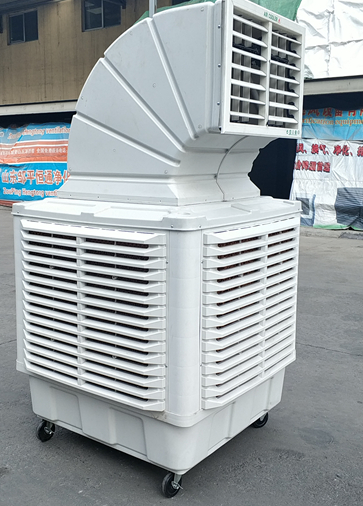Introduction
Barn fans play a crucial role in maintaining a conducive environment for dairy cattle, ensuring adequate ventilation, temperature control, and overall comfort. Choosing the right dairy farm barn fans for a dairy farm is a decision that requires careful consideration of various factors to optimize cattle health and farm productivity.

Understanding the Dairy Farm Environment
Before diving into selecting Dairy farm barn fans, understanding the unique aspects of the dairy farm environment is pivotal. Factors like regional climate, barn size, layout, and the specific ventilation requirements for the cattle are essential. For instance, a dairy farm in a hot and humid climate will have different ventilation needs compared to one in a cooler region.
Factors to Consider When Choosing Dairy farm barn fans
- Fan Size and Capacity
Selecting the right fan size and capacity is fundamental in ensuring proper ventilation within the dairy barn. The size of the barn, the number of dairy cattle housed within, and the layout of the space all influence the choice of fan size.
Determining Fan Capacity: Calculating the required airflow per cow or per square footage of the barn helps determine the fan capacity needed. A general rule of thumb is to aim for 1,000 to 1,500 cubic feet per minute (CFM) per cow to maintain adequate ventilation. Larger barns might require multiple fans or larger-capacity fans to ensure proper air circulation.
- Fan Type and Design
There’s a variety of fan types and designs available for dairy barns, each with its own set of advantages and limitations.
Ceiling Fans: These fans are commonly installed overhead and provide consistent airflow throughout the barn. They are efficient in circulating air evenly, making them suitable for larger barns.
Box Fans: Placed strategically along the walls, box fans offer targeted airflow and are effective in specific areas. They can be adjusted to direct airflow towards areas that need better ventilation.
Exhaust Fans: These fans are designed to remove stale air from the barn, facilitating fresh air intake. They work well in combination with other fans to maintain air quality.
Choosing the Right Type: The choice of fan type largely depends on the barn’s layout, the number of cattle, and specific ventilation needs. A combination of different fan types might be necessary to ensure comprehensive and efficient air circulation within the barn.
- Efficiency and Energy Consumption
Opting for energy-efficient fans not only reduces operational costs but also lessens the environmental impact. Energy-efficient models might have a higher initial cost but can result in significant savings over time.
Energy Ratings: Look for fans with high Energy Star ratings or those certified by relevant energy efficiency standards. These fans typically consume less electricity while delivering adequate airflow.
Performance vs. Efficiency: Balance between performance and energy efficiency is crucial. While selecting energy-efficient models is important, ensuring they meet the necessary airflow requirements for the barn is equally essential.
- Durability and Maintenance
The durability and ease of maintenance of Dairy farm barn fans significantly impact their longevity and effectiveness in a dairy farm environment.
Materials and Construction: Fans constructed with durable materials such as galvanized steel or corrosion-resistant components tend to withstand harsh barn conditions better. Ensure the fan materials can endure exposure to moisture, dust, and varying temperatures.
Maintenance Requirements: Opt for fans with straightforward maintenance needs. Easy-to-access components for cleaning, lubrication, and inspection help in regular upkeep, prolonging the fans’ lifespan and maintaining optimal performance.
- Noise Levels and Animal Comfort
Excessive noise from fans can stress dairy cattle, negatively impacting their health and milk production. Prioritizing fans with lower noise emissions contributes to a more comfortable environment for the cattle.
Noise Reduction Measures: Look for fans equipped with noise-reducing features or consider installing sound barriers to minimize noise levels. Positioning fans strategically or using insulated materials can also help mitigate noise.
Impact on Animal Welfare: Reduced noise levels contribute to a less stressful environment for dairy cattle, promoting their well-being, comfort, and ultimately, productivity.
Budget Considerations and Return on Investment (ROI)
Analyzing the initial costs versus long-term benefits is crucial. Calculating the return on investment based on improved cattle health, productivity gains, and reduced losses aids in making an informed decision.
Conclusion
Choosing Dairy farm barn fans for a dairy farm involves a comprehensive evaluation of factors like fan size, type, efficiency, durability, noise levels, and budget considerations. By considering these essential factors, farmers can select the right Dairy farm barn fans that contribute significantly to maintaining optimal ventilation, ensuring cattle welfare, and ultimately enhancing the farm’s productivity and profitability.
Related Products





